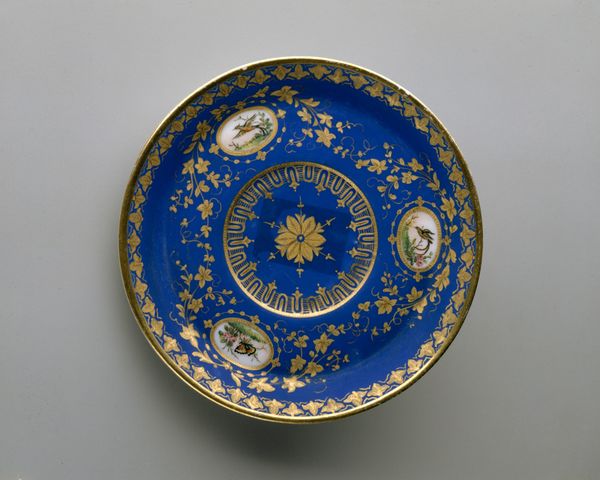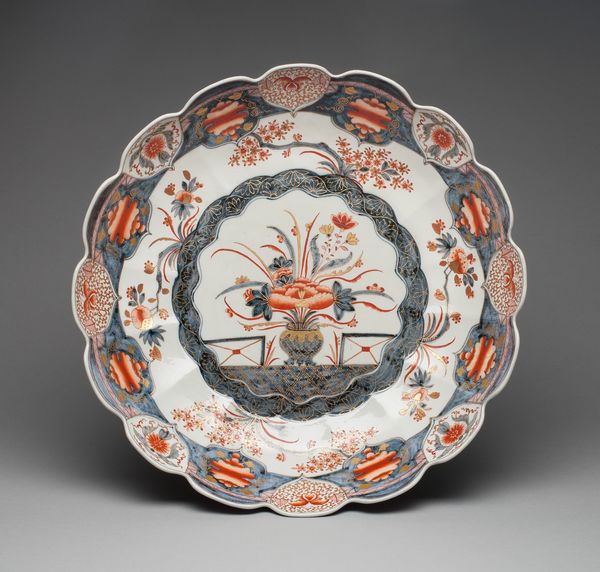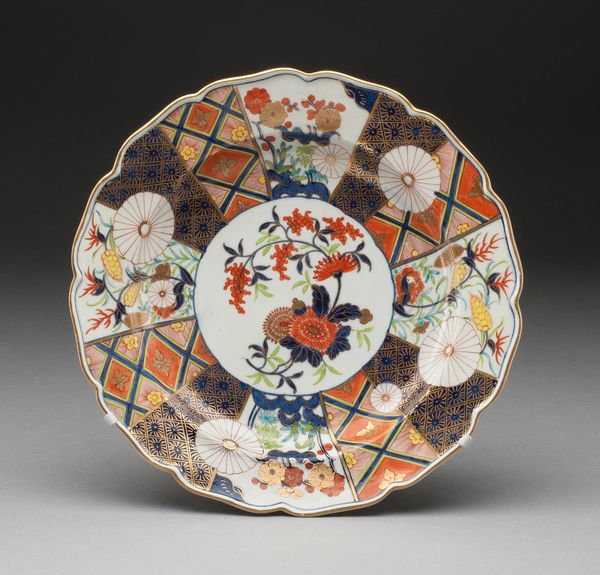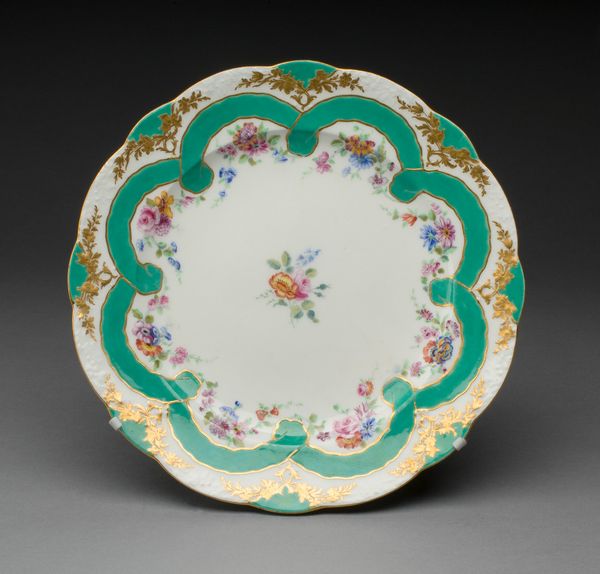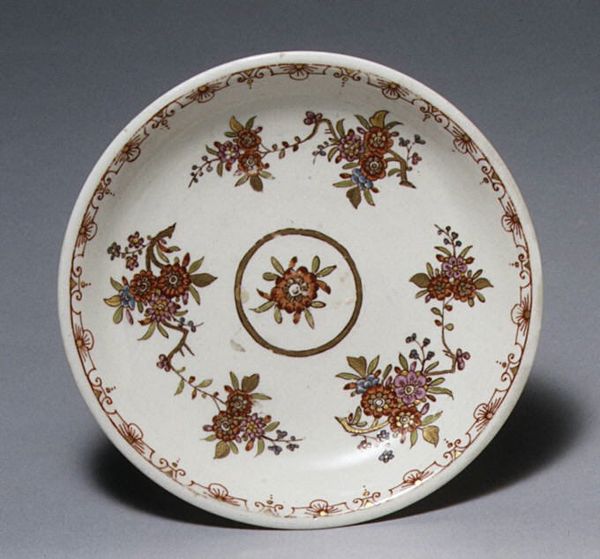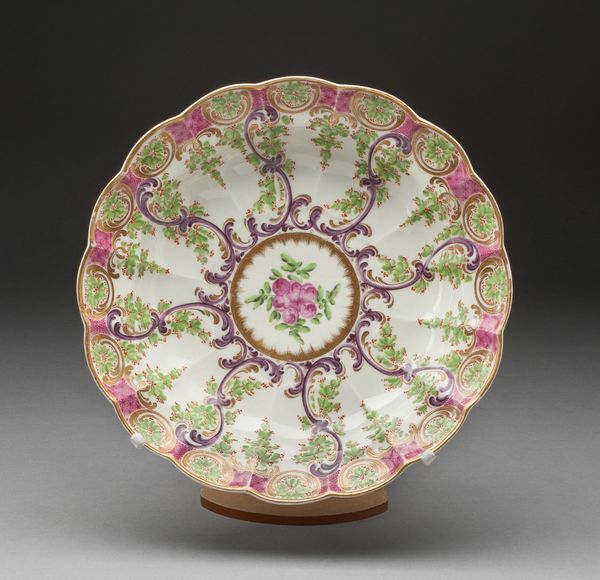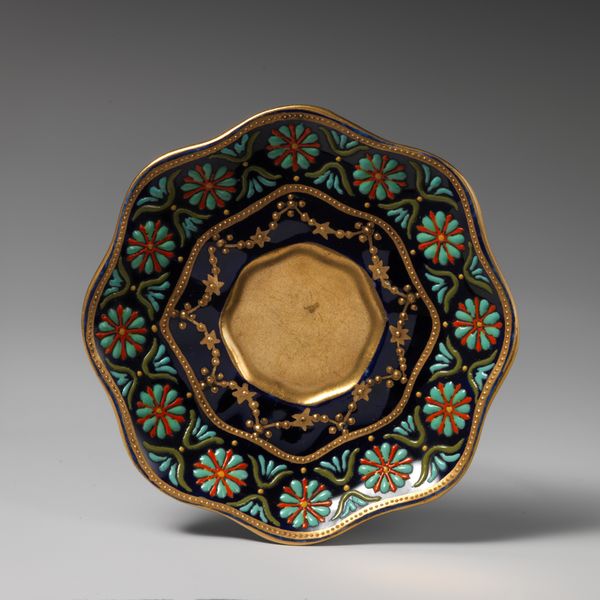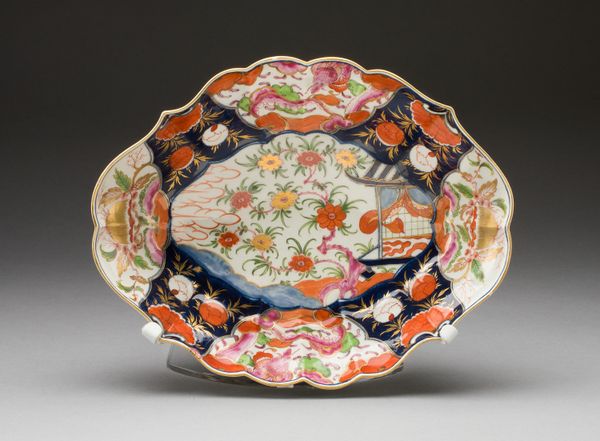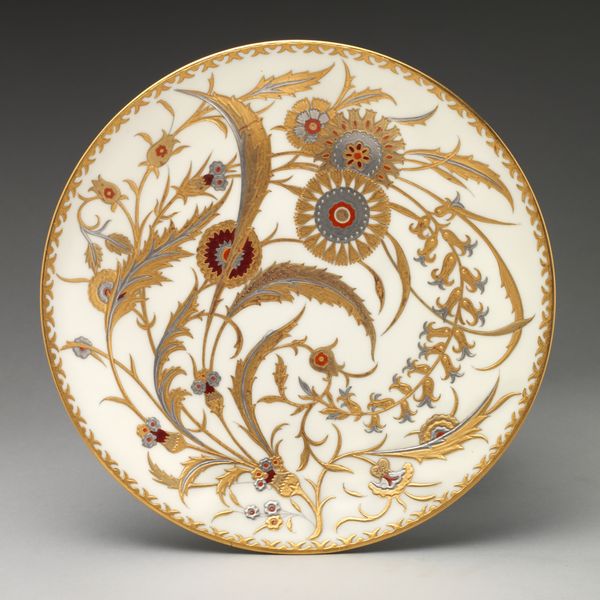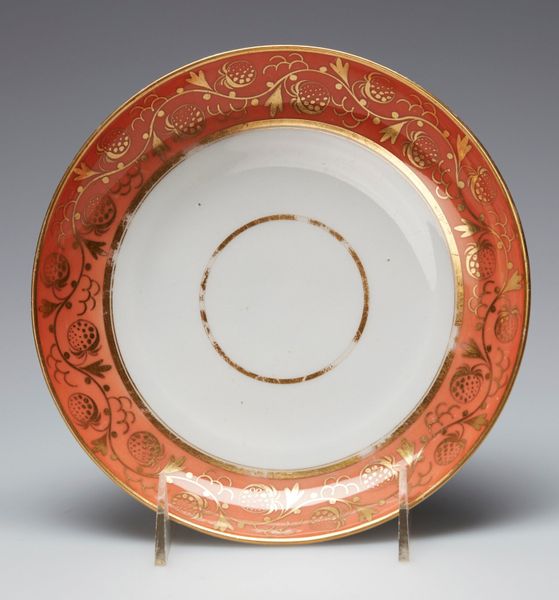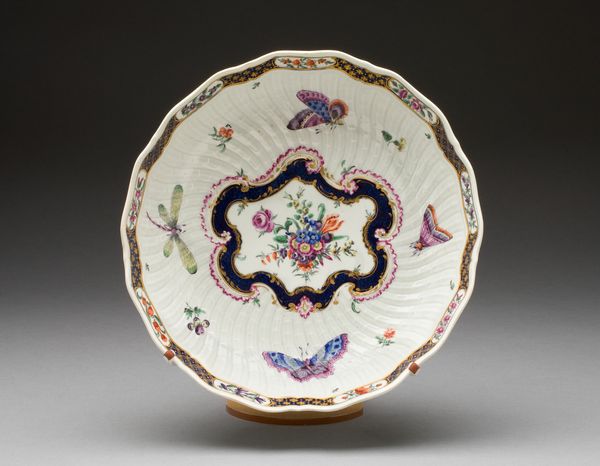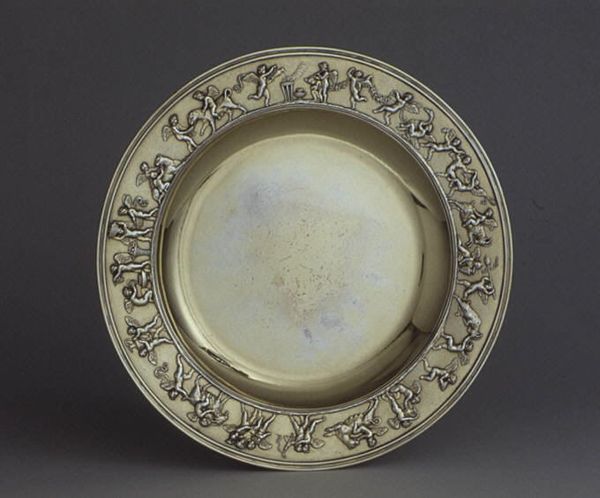
Octagonal Bowl with Dragons and Auspicious Motifs 1850 - 1899
0:00
0:00
tempera, ceramic
#
tempera
#
asian-art
#
ceramic
#
ceramic
#
24_meiji-period-1868-1912
Dimensions: H. 2 in. (5.1 cm); W. 6 3/8 in. (16.2 cm)
Copyright: Public Domain
This octagonal bowl, now at the Met, was made by Eiraku Tokuzen sometime before 1909. It is porcelain, decorated with overglaze enamels and gold. Porcelain’s a tricky material. It requires considerable skill to mix, form, fire, and decorate. In this case, the artist has used it to superb effect, contrasting the pure white body of the bowl with bright red and gold decoration. Dragons swirl in the central medallion, while auspicious symbols ring the perimeter. The bowl gives us a glimpse into the complex economies of ceramics in Japan. It was made during a period of rapid industrialization, when many craftspeople were struggling to maintain their livelihoods. Yet, the meticulous detail of the enameling and gilding speaks to a desire to maintain the standards of high-end craftsmanship. Each stage – forming, glazing, firing, painting – would have involved intense, specialized labor. It's a reminder that even seemingly small objects can be powerful carriers of cultural values and social histories.
Comments
No comments
Be the first to comment and join the conversation on the ultimate creative platform.
